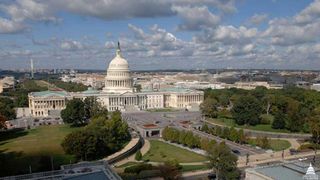Schools & Libraries: We're Keys to Closing Rural Divide

Anchor institutions say they have a plan for closing the digital rural divide, and expanding access to TV white spaces is a big part of it.
In announcing a “To and Through Anchors” branded strategy, the Schools, Health & Libraries Broadband (SHLB) Coalition says that it would cost between $13 billion and $19 billion to connect every anchor institutions--schools, libraries, community centers--in the country (excluding Alaska) with fiber, which in turn could help connect the vast majority of unserved and underserved rural communities to high-speed broadband.
“Deploying high-capacity broadband to and through community anchor institutions to their communities is a proven and successful strategy," said SHLB executive director John Windhausen, Jr.
Positioning those anchor institutions as key to a broadband deployment strategy in rural areas comes as the Trump Administration has recommended spending $50 billion on rural infrastructure, including for broadband, and tabbed rural, particular farmers' access to broadband a priority.
That pitch also includes leveraging the so-called TV white spaces Microsoft has been pushing to expand as the FCC is preparing to accommodate TV stations in the post-auction repack (Microsoft has representation on the SHLB board). “Fiber-connected schools, libraries and health clinics across the heartland can serve as anchors to deploy TV white space connections to remote communities where laying cable is simply not an option,” said Richard Cullen, executive director of Connect Americans Now.
Related: Microsoft Pushes For More White Spaces
SHLB suggested that expanding use of the "white spaces" in the broadcast TV band is definitely part of the plan.
SHLB’s “To and Through Anchors” strategy puts forth several key policy recommendations, such as ensuring that sufficient TV White Space channels are available," the group said of its report outlining the strategy.
Broadcasters are concerned about interference to their signals from unlicensed devices using that spectrum, including in the more cramped post-incentive auction spectrum quarters, as well as leaving less room for broadcast expansion in the band or channels to accommodate the low power TV's and translators, who were not guaranteed channels after the auction.
Broadcasting & Cable Newsletter
The smarter way to stay on top of broadcasting and cable industry. Sign up below
Contributing editor John Eggerton has been an editor and/or writer on media regulation, legislation and policy for over four decades, including covering the FCC, FTC, Congress, the major media trade associations, and the federal courts. In addition to Multichannel News and Broadcasting + Cable, his work has appeared in Radio World, TV Technology, TV Fax, This Week in Consumer Electronics, Variety and the Encyclopedia Britannica.

